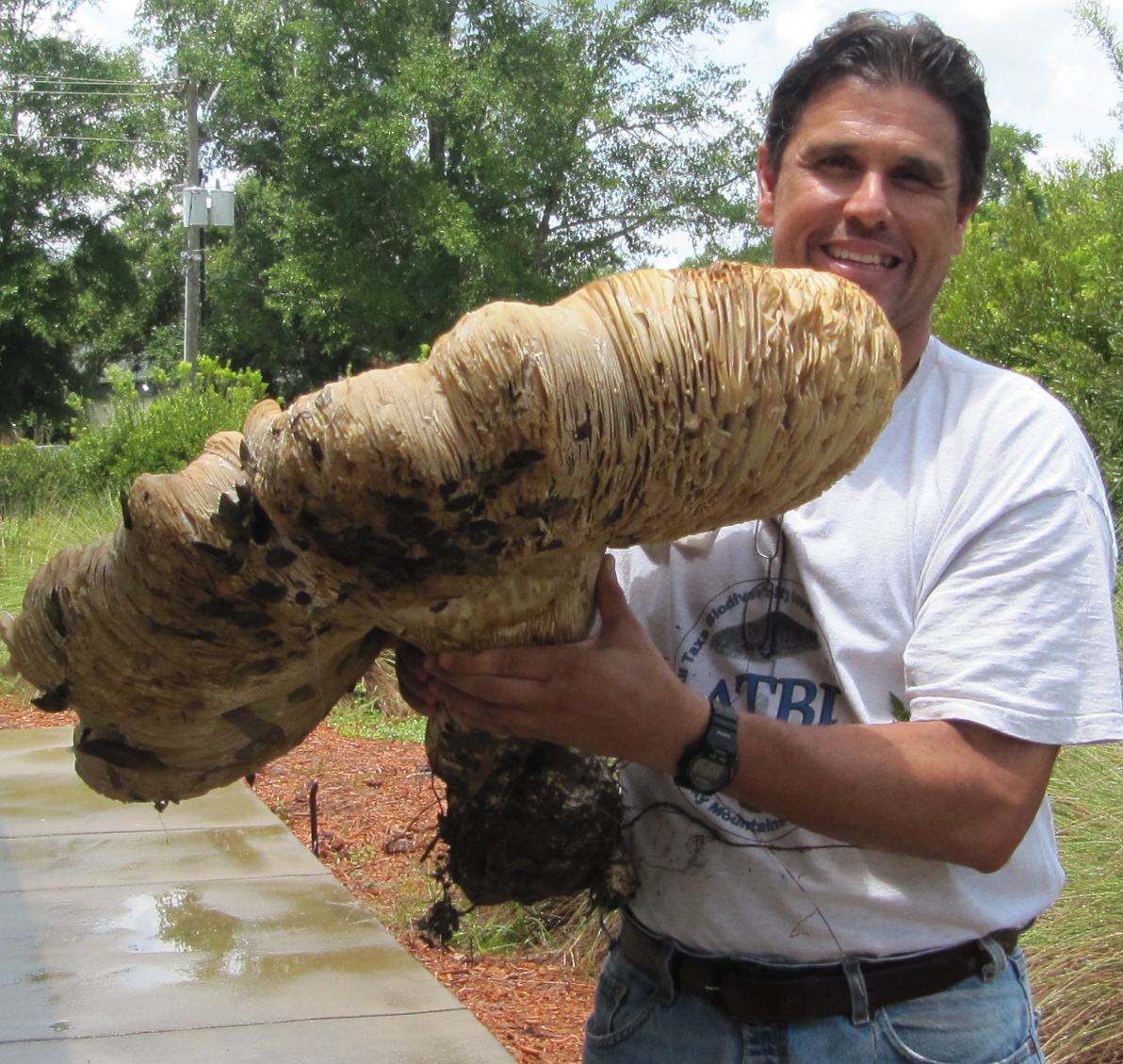Juan Luis Mata's Research Area
Three activities occupy most of my research:
- My research interests are on taxonomy, systematics and ecology of the Agaricales (mushrooms
and allies). Most of my work has focused on neotropical and subtropical fungi, particularly
those from Costa Rica. Now, I am working with mushrooms of the Gulf States of the
United States, also an area of exceptional biodiversity. Many neotropical fungi have
affinities with northern fungi, including those present in southeastern United States.
- I am working with the American Shiitake (Lentinula raphanica). An edible species like the commercial strain, this mushroom in not well-known and
there are no genetic or physiology studies. In my lab, students have performed basic
cultural and molecular studies that will enable us to study other aspects such as
fruiting parameters, strain selection, and genotyping.
- Because of the proximity to major water bodies –the Mobile River Delta and the Gulf of Mexico- I am involved in a collaborative effort to document fungi associated to seagrasses. We have been able to identify several mitosporic fungi previously which constitute new reports on this type of angiosperms, and brings to attention the ecological role of this inconspicuous fungi in fragile marine ecosystems.
The tools used to complete these projects include in vitro mating studies, basidiome (i.e. mushroom) morphological description and analysis, and DNA sequencing. Fieldwork is needed to collect these fungi in their natural environment.
Recent Publications
Mata, J.L, Ovrebo, C.L., Baroni, T.J. and Hughes K.W. 2016. New species of neotropical Rhodocollybia. Mycotaxon 131:235-246.
Mata, J.L. and Mishra, N.T. 2015. A comparative study of worldwide Lentinula strains based on linear mycelium growth. International Journal of Medicinal Mushrooms 17(5):481-489.
Mata, J.L & Cebrian, J. 2013. Endophytic fungi on the seagrasses Halodule wrightii and Thalassia testudinum in the North Central Gulf of Mexico. Botanica Marina 56(5-6):541–545.
Mata J.L. and Ovrebo C.L. 2009. New reports and illustrations of Gymnopus for Costa Rica and Panama. Fungal Diversity 38:125-131.
Hughes K.W., Petersen R.H., Mata J.L., Psurtseva N., Kovalenko A., Morosova O., Lickey E., Cifuentes-Blanco J., Lewis D.,
Nagasawa E., Halling R.E., Takehashi S., Aime M.C., Bau T., and Henkel T. 2007. Megacollybia
(Agaricales). Rep. Tottori Mycol. Inst. 45:1-57.
Mata, J.L., Hughes, K.W. and Petersen, R. H. 2007. An investigation of /omphalotaceae (Fungi:
Euagarics) with emphasis on the genus Gymnopus. Sydowia 58(2):191-289.
Mata, J.L., Halling, R.E., Hughes, K.W. & Petersen, R. H. 2004. Rhodocollybia (Agaricales)
from neotropical montane forests. Mycological Progress 3(4): 337-352
Mata, J.L., & Petersen, R.H. 2004. New species and mating system reports in Gymnopus from Costa Rica. Fungal Diversity 16: 113-129
Schmit, J.P., Mueller, G.M., Leacock, P.R., Mata, J.L., Wu, Q., and Huang, Y 2005. Assessment of tree species richness as a surrogate for
macrofungal species richness. Biological Conservation 121:99-110.
Mata, J.L., Halling, R. E., Hughes, K.W. & Petersen, R. H. 2004. Phylogenetic placement of
Marasmiellus juniperinus. MycoScience 45:214-221.
Mata, J.L. & Petersen, R.H. 2003. Type studies of neotropical Collybia species. Mycotaxon 86:303-316.
Mata, J.L., Petersen, R.H. and Hughes, K.W. 2001. The genus Lentinula in the Americas. Mycologia 93(6): 1102-1112.
Mata, J.L. and Petersen, R.H. 2001. Type specimen studies in New World Lentinula. Mycotaxon 79:217-229.
Mata, J.L. and Petersen, R.H. 2000. A new species of Lentinula (Agaricales). MycoScience 41: 351-355.

Associate Professor
Ph.D. Botany, University of Tennessee 2002



